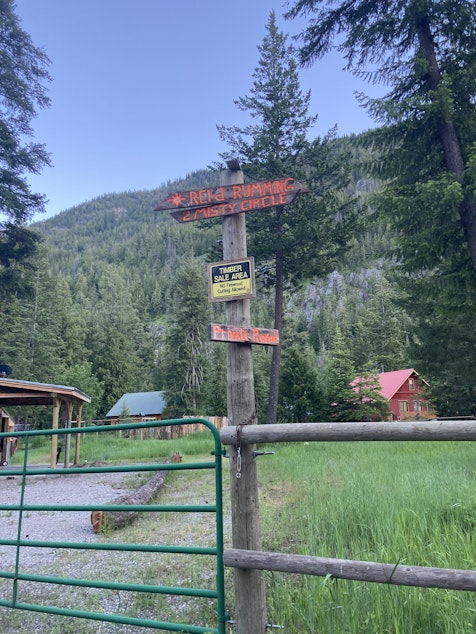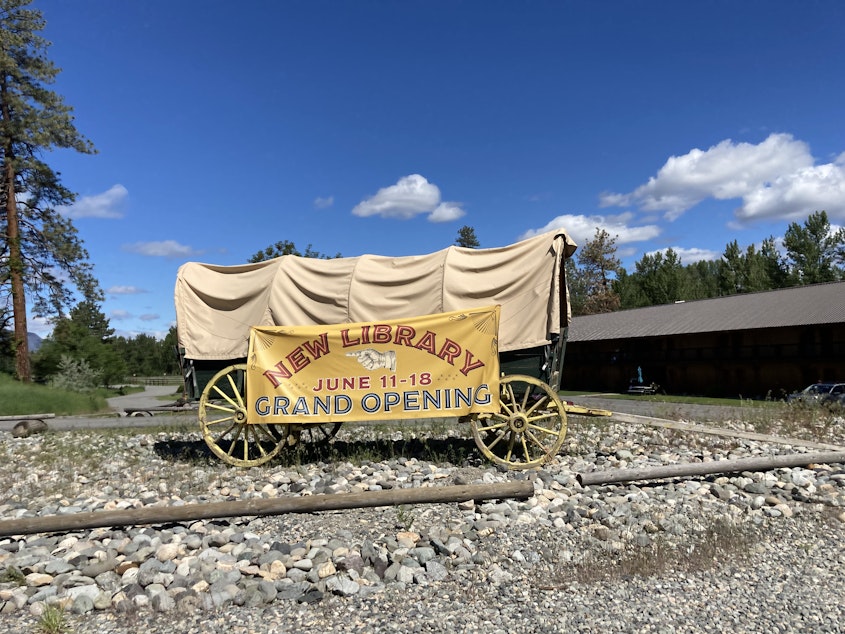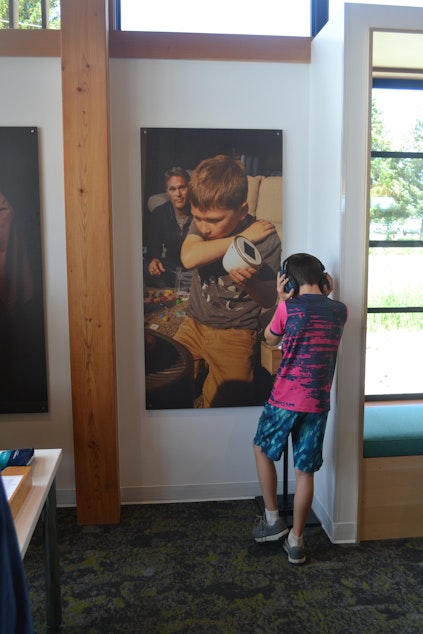For the Methow Valley, wildfire smoke has created a 'fifth' season

The Methow Valley starts at the east end of the Cascades, at the headwaters of the Methow River. It includes the towns of Twisp and Winthrop, as well as the unincorporated community of Mazama.
Residents of the valley experience the same four seasons most of us do — spring, summer, fall, and winter. But in the last ten years, a fifth season has crept into Methow Valley life: Smoke season.
This year, spring was especially cold and wet in North Central Washington. The hillsides are still a heather green, awash in bitterbrush and bunchgrass. But many here are bracing for the inevitable — when these shrubs and grasses become tinder-dry fuel for the next wildfire.
"You can really feel it in your nostrils and your lungs," said Reid Rumming, a Methow local who's lived in Mazama for the last 25 years. "Come back here in July and you'll experience smoke. Even if we don't have fires here, we'll still have smoke."
Rumming regularly clears the brush around his home in preparation of wildfire season, overseeing prescribed burns. He's had to evacuate his property several times as wildfire season intensifies, and said there's a loneliness that descends on the valley when smoke forces residents indoors and fire pushes locals elsewhere.
"It's kind of insidious," Rumming said. "It just seems like you're used to it, and then when it gets be catastrophic, it's too late."

Sponsored
Down the road lives Thomas Leidholdt, who struggles with a degenerative lung disease that is exacerbated by wildfire smoke.
"The emphysema is so thick on the outside walls of my lung's that it's hard for the oxygen to get into the lung," Leidholdt said. "And then the bottom part of the lung is like an old dried up sponge. So it doesn't suck anything up."
In a sense, the Methow Valley is a great place for Leidholdt's lung condition, because of how dry it is. But the geography of the valley collects smoke from around the state in the warmer seasons.
In addition, Leidholdt uses a wood burning stove in the winter months, which is common in the more rural areas of the Methow.
"I didn't think about it," he said. "I just realized it was getting harder to breath and I wasn't able to do as much. I didn't think about the forest fires because you're here, you're breathing it all the time. So I just didn't pay attention to it."
Sponsored
A new normal
In 2018, parts of the Methow Valley experienced 40 consecutive days of unhealthy to hazardous air quality. Last year, in 2021, they had 38 consecutive days. But for Elizabeth Walker, the director of Clean Air Methow, the flash point in the Methow was 2014, after the Carlton Complex Fire.
The complex fire originated from four separate lightning strikes in the Methow Valley, and the resulting fires merged into the largest wildfire in Washington history at the time, covering 256,108 acres.
"[We had] several weeks of unhealthy to hazardous air quality, and saw the dire need to expand to really think about air quality, and especially wildfire smoke," Walker said.
Clean Air Methow took the lead on communicating the dangers of wildfire smoke exposure, including giving out N95 masks, posting air quality information in community spaces and billboards throughout the valley, and running a wood stove exchange program.
Sponsored
Smoke is comprised of a number of particulates and gasses, which can lead to long-term health complications when inhaled. Those particulates are a few microns, equivalent to a hundredth of the width of a human hair.
"We've learned that these particles have effects on the lungs, making you cough, triggering asthma attacks, exacerbations of diseases like emphysema or chronic bronchitis," said Dr. Joel Kaufman, a physician at the University of Washington's departments of environmental and occupational health sciences, medicine, and epidemiology.
Chronic smoke exposure can also trigger heart attacks and strokes for those already at risk, acting as a kind of tipping point for catastrophic health events.
Wood particles make up most of wildfire smoke emissions. And as wildfires grow hotter and larger, health experts worry about other structures burning and releasing more toxic chemicals and particulates into the air.
Concerns about mental health are also growing.
Sponsored
"We've all learned a little bit about what lockdowns mean, but for some people in some of these areas, whole summers have gone by where they haven't felt like they should be outdoors," Kaufman said. "That takes a huge toll on a community in terms of what you might call the physiological health effects."
Kaufman said that thanks to hydroelectric power, the Pacific Northwest has long sustained some of the best air quality in the country, especially when comparing urban areas. But intense weeks of smoke is changing that reality, especially in Western Washington.

Looking to the future
"There are no boundaries," said Soo Ing-Moody, the mayor of Twisp, a town of around 1,000 people toward the end of the Methow Valley. "I think all these lines of delineation of what happens over here doesn't affect me over there — these are false perceptions that I hope we can lose in time."
Sponsored
The 2014 Carlton Complex Fire was an instructional moment for Twisp. The fire took down landlines and cell towers, and electricity was out for more than a week.
"We could see friends houses literally blowing up as combustion was crossing the hillside," Ing-Moody said. "We were all quiet, just standing there watching."
Since then, Twisp is almost finished with construction of a new emergency communications hub, which also serves as the town hall. It's one of the first new buildings in years.
For Ing-Moody, cohabitating with wildfire is something the residents of the Methow Valley acknowledge as part of the region's identity.
"To live in an environment like the Methow means there's a certain toughness and tenacity that you have to possess," she said. "I would say you make sacrifices."
Further north, the town of Winthrop opened a new library that will offer the usual community services, but will also act as a refuge from smoke. As part of that opening, the library features a series of audio stories titled "The Fifth Season."
The exhibit is a collaboration between Clean Air Methow, the University of Washington EDGE Center in the School of Public Health, and the Univeristy of Washington's Communication Leadership Program.

You can listen to the full Soundside special by clicking the audio above.
You can listen to the full range of Fifth Season stories, which spotlight the experiences of a number individuals and communities throughout the Methow Valley region, by clicking the audio below. You can see and hear more from the Clean Air Methow's fifth season project here.





